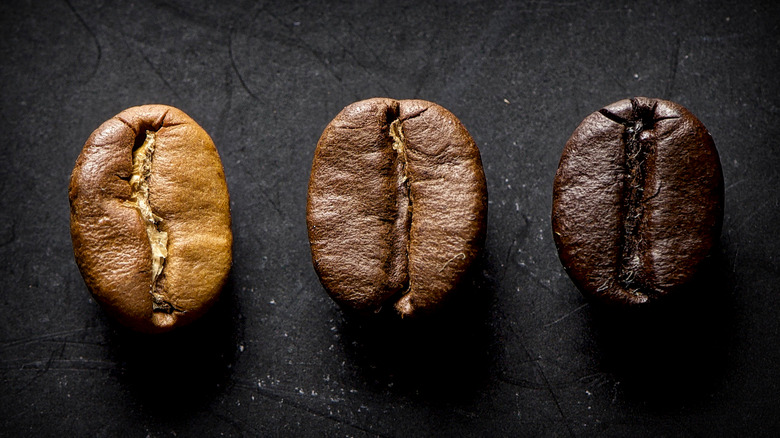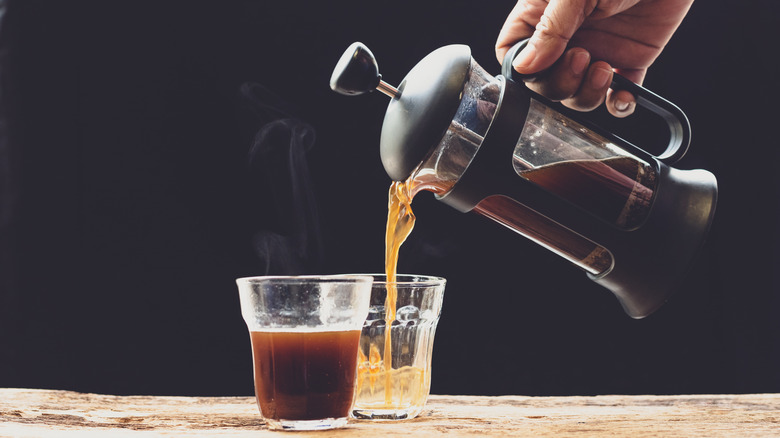How Brewing Temperature Varies For Dark And Light Roast Coffees
The differences between dark and light-roasted coffee extend beyond just their color. The level at which coffee beans are roasted has an effect on everything from the shade of the brew to the levels of caffeine to the best temperature for brewing the beverage. The shade of the coffee beans — light, medium, or dark — is indicative of how long they were roasted, and this roast level affects the taste of the brew.
The water's job in the brewing process is to extract the flavor compounds from the ground coffee beans, and this is where temperature comes into play. Water that is too hot will result in a bitter-tasting coffee, and water that isn't hot enough will give you a weak and watery brew. The roasting process breaks down the cellular structure of the coffee, and since darker beans have undergone it for longer, they dissolve more easily and fare best at a lower temperature. Lighter roasts are more complete in structure, having spent less time in the process, and need a hotter temperature to dissolve.
What temperature is best for brewing light and dark roast coffees?
Therefore, light roast coffees are best brewed with water between 203 and 207 degrees Fahrenheit, and darker roast coffees only need water that is between 194 to 200 degrees Fahrenheit. Since water boils at 212 degrees, giving it the necessary time to cool down matters for both, and keeping an instant-read thermometer handy will make it simple to know when to infuse, drip, etc. For safety's sake, also give the brewed coffee time to cool off because most folks drink theirs at around 140 degrees Fahrenheit.
If you'd rather automate the process, many countertop coffee machines have a manual option to control the temperature. And if brewing in a vessel like a French press, you may want to gently warm the carafe first by running hot water over it to avoid a loss in temperature upon infusion of the grounds.

